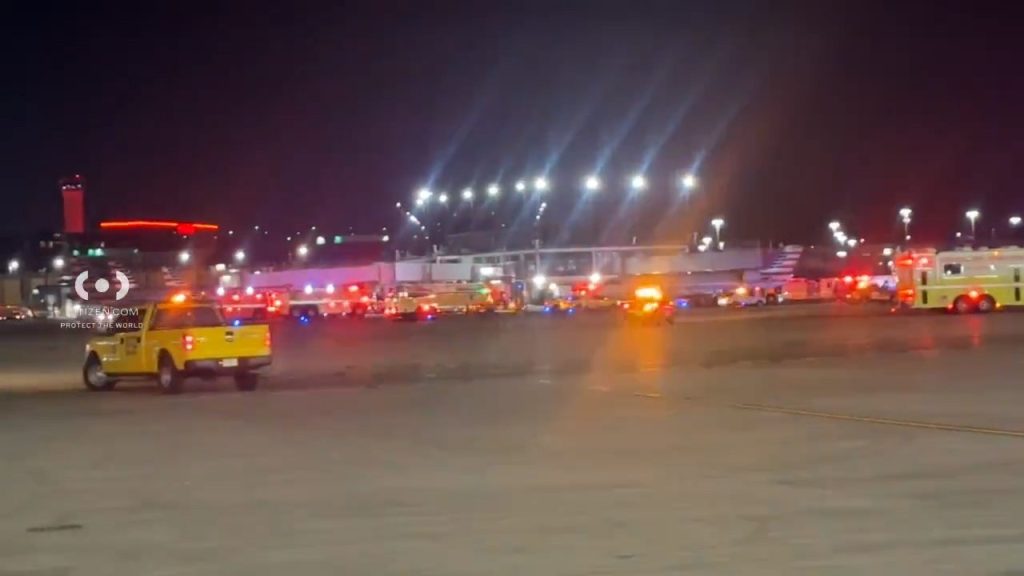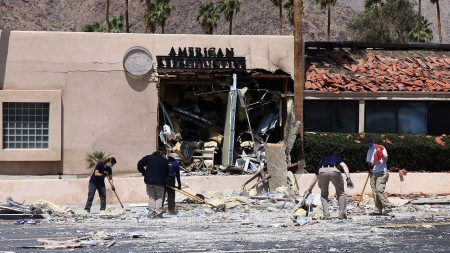The incident at O’Hare International Airport on Saturday, involving an aircraft tug and an American Eagle flight, underscores the inherent risks associated with ground operations in the complex and dynamic environment of a major airport. A 64-year-old tug driver, employed by United Airlines, sustained serious head and lower body injuries when the wing of the taxiing Bombardier CRJ-200, operating as American Eagle Flight 6181, struck his vehicle. The force of the impact flipped the tug, trapping the driver inside until emergency responders could extricate him. He was subsequently transported to Lutheran General Hospital in critical condition, but his status has since been upgraded to stable. While no passengers or crew members on the flight were injured, the incident serves as a stark reminder of the importance of safety protocols and vigilance in all aspects of airport operations.
The circumstances surrounding the collision remain under investigation by both the Federal Aviation Administration (FAA) and local authorities. Preliminary reports from the FAA indicate the tug may have been crossing the taxiway when the aircraft made contact. This raises questions about communication procedures and adherence to established ground movement protocols. A thorough investigation will aim to determine the precise sequence of events leading to the collision, identifying any contributing factors such as human error, equipment malfunction, or communication breakdowns. The findings will be crucial in developing preventive measures to mitigate the risk of similar incidents in the future.
The incident has prompted statements from both American Airlines and United Airlines, expressing concern for the injured employee and emphasizing their commitment to safety. American Airlines stated that they are reviewing the incident, prioritizing the safety of their customers and team members. United Airlines, the employer of the injured tug driver, confirmed they are providing him with necessary support and care. These statements reflect the airlines’ recognition of their responsibility to ensure a safe working environment for their employees and a safe travel experience for their passengers.
The incident at O’Hare comes just days after a fatal accident involving an American Airlines worker at Charlotte Douglas International Airport, further highlighting the potential hazards inherent in airport ground operations. While the details of the Charlotte incident remain limited, the proximity of these two events underscores the need for a comprehensive review of safety procedures and training programs across the aviation industry. The focus must be on preventing future tragedies and ensuring the well-being of all those who work in and travel through our nation’s airports.
The investigation into the O’Hare incident will likely involve a detailed reconstruction of the events, including analysis of air traffic control communications, witness statements, and any available video footage. Investigators will also examine the maintenance records of both the aircraft and the tug vehicle to rule out any mechanical failures that may have contributed to the collision. The FAA’s findings will be shared with the National Transportation Safety Board (NTSB), which may conduct its own independent investigation. The ultimate goal is to identify any systemic issues that need to be addressed to enhance safety and prevent similar incidents from occurring.
The impact of this incident extends beyond the immediate concern for the injured driver. It serves as a reminder of the complex interplay of human factors, equipment, and procedures that are essential for safe airport operations. The investigation’s findings will be critical in informing industry best practices and shaping future safety regulations. The aviation industry must continuously strive to improve its safety record, learning from each incident to create a safer environment for all. The focus should be on proactive measures to prevent accidents, rather than reactive responses after they occur.










